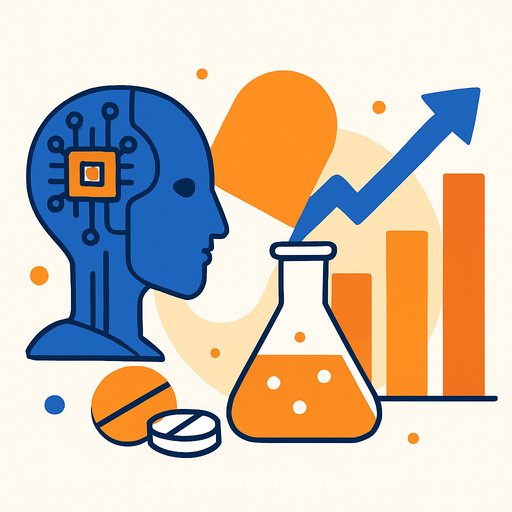AI Drug Development Platform Market
CAGR 29.90% Future Outlook
The AI Drug Development Platform market is growing quickly, driven by the demand for faster and more cost-effective drug discovery. Pharmaceutical companies face pressure to shorten development cycles and increase success rates. AI offers a solution by using machine learning, data analytics, and natural language processing to analyze large datasets, identify drug candidates, and optimize formulations faster than traditional methods.
This approach improves drug development accuracy and supports personalized treatments, enhancing patient outcomes. From 2025 to 2032, the market is expected to grow at a compound annual growth rate (CAGR) of 29.90%. As AI technologies mature and regulatory frameworks adapt, more organizations will integrate AI into their R&D pipelines. Advances in computational power and access to extensive biomedical data are key factors behind this growth.
Key Growth Drivers and Trends
Several factors are driving the AI Drug Development Platform market. Sustainability efforts push pharmaceutical companies to reduce waste and improve efficiency. The digital transformation of healthcare raises consumer expectations, encouraging firms to adopt AI solutions that improve patient outcomes and streamline operations.
AI plays a central role in drug design, with companies using algorithms and machine learning to develop new therapeutics. Predictive analytics is increasingly valuable for anticipating treatment results and optimizing clinical trials. These trends open doors for personalized medicine and innovative treatments in biopharmaceuticals.
Market Segmentation
The AI Drug Development Platform market breaks down into the following segments:
- By Type: Software Provider Mode, CRO Service Mode, Self-Development Pipeline Mode
- By Application: SMEs (Small and Medium-sized Enterprises), Large Enterprises
Software providers focus on delivering AI-driven drug development software to enhance research. CRO service modes offer AI-powered clinical trial management and related services. Self-development pipelines let organizations build AI capabilities internally for drug discovery.
Competitive Landscape
Leading companies in this space include:
- Insilico Medicine: Offers AI drug discovery platforms with predictive analytics tools to speed development.
- MindRank: Partners with pharmaceutical firms using AI for drug design and research efficiency.
- BenevolentAI: Integrates advanced machine learning to improve drug discovery workflows.
- Exscientia: Focuses on AI-assisted drug screening, collaborating with biopharma companies.
- Deep Pharma Intelligence: Uses AI to optimize drug development pipelines and decision-making.
- Delta4: Applies AI to clinical trials for better patient recruitment and data management.
- DNDi: Targets neglected diseases using AI and big data analytics.
- Standigm: Enhances AI capabilities for data-driven drug discovery.
These players advance platform features and push the integration of AI deeper into drug development processes.
Opportunities and Challenges
The market offers growth opportunities in areas like rare disease research and personalized medicine. A more tech-savvy research community is increasing demand for AI solutions that improve drug discovery and clinical trials.
However, regulatory hurdles remain a challenge. Compliance with strict standards can slow AI adoption. Companies should engage regulators early and invest in strong data management systems to ensure smooth integration of AI technologies.
Technological Advancements
New technologies are changing how drug development works. Digital twins create virtual patient models for precise simulations and personalized treatments. The Internet of Things (IoT) enables real-time data collection in clinical trials, improving monitoring and accuracy.
Virtual reality offers immersive training for researchers and healthcare professionals. Blockchain ensures data security and integrity during clinical trials, adding trust to the process.
Research Methodology and Insights
Market insights come from a thorough research methodology combining top-down and bottom-up approaches. Primary data is gathered from industry experts and stakeholders, while secondary data includes industry reports and academic studies. Multi-layer triangulation validates findings for accuracy and relevance.
These insights help stakeholders make informed decisions as AI continues to shape drug development. For IT and development professionals interested in AI applications, exploring specialized AI courses can provide valuable skills to engage with this evolving market. Check out Complete AI Training's latest AI courses for practical learning paths.
Your membership also unlocks:






